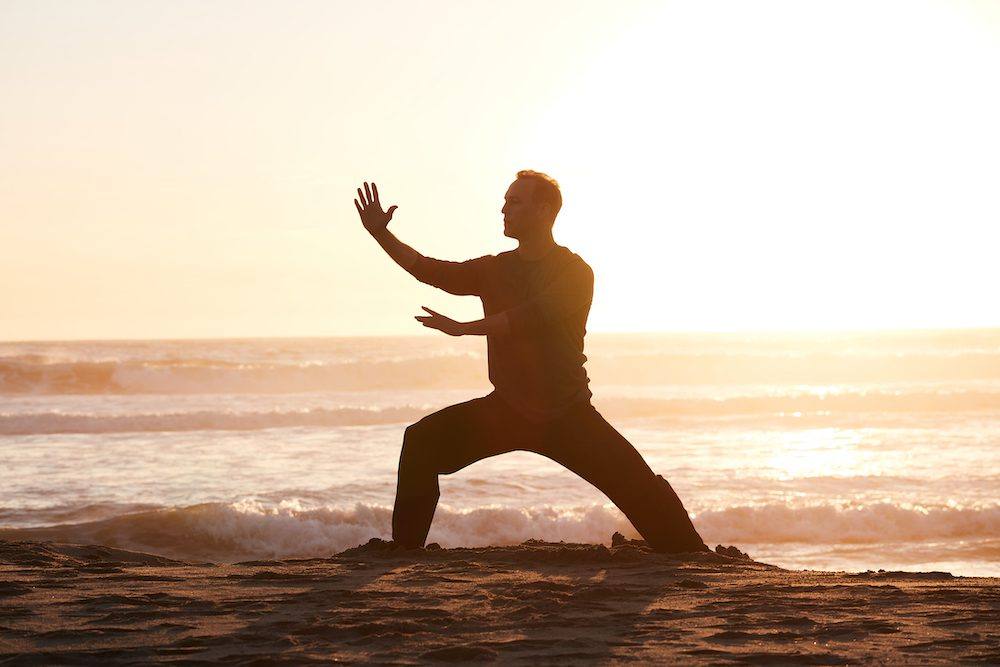“Stillness and action are relative, not absolute principles. It is important to find a balance of yin and yang, not just in qigong, but in everyday life. In movement, seek stillness and rest. In rest be mindful and attentive.”
Ken Cohen
Unlock the Secrets of 6 Healing Sounds in Qigong Practice
In the world of holistic wellness and ancient healing practices, the resonance of sound plays a profound role in harmonizing the mind, body, and spirit. Today, we delve into the fascinating realm of Qigong, where the “6 Healing Sounds” take center stage as a powerful tool for self-healing and balance.
These six healing sounds, combined with mindful movements, are believed to release blocked energy, restore vitality, and promote overall well-being. Join us on a journey to unlock the secrets of these therapeutic sounds and discover their potential for inner transformation.
What is Qigong and How Can it Benefit You?
Qigong is the Chinese word for ‘life energy’. Qigong is an ancient mind/ body/spirit system of coordinated body movements, breath, meditation, sounding, and self-massage used to attain and maintain optimum health and eventual enlightenment.
With breath, movement, and intention, “Practicing” is the correct spelling of the word. Qigong can reduce anxiety and depression, control blood pressure, relieve chronic pain, strengthen the immune and respiratory systems, and generally improve fitness and well being.
Qigong classes focus on energising breathing exercises and primordial healing sounds. Centuries ago, the Qigong healing sounds were drawn from the 6 healing sounds of the animals, the water, the sky, and the visceral human sounds of pain or grief. They morphed into what we call the six healing sounds of qi-gong.

6 Healing Sounds of Qigong
The sounds are as follows:
- Xu- for the Liver – (the sound is pronounced shu )
- Ho-for the heart
- Fu – for the spleen
- Xi – for the Lungs – (pronounced si)
- Chu – for the kidneys
- Hey – for the triple burner- lower abdomen, midriff, and upper torso
When practising the Qigong healing sounds, breath, sound, and movement are integrated as a fluid form. The vibratory sounds in conjunction with simple arm movements are directed with healing intention towards the individual organs within the body.
The pronunciation of the healing sounds and accompanying movements may differ slightly depending on which lineage the teacher is working from. (There are informative demonstrations of Qigong on YouTube by Mantak Chia and Sat Chuen Hon, among others.
The Six Healing Sounds are demonstrated by Sat Chuen Hon on a YouTube dated April 28, 2013 and are outlined in his book Taoist Qigong for Health and Vitality: a Complete Program of Movement, Meditation, and Healing Sounds (Boston, 2003, p. 29)).
Understanding the Yin and Yang of Qigong
The ancient practice of Qigong is fundamentally about moving energy – qi (or chi) throughout the body to create optimum energy flow and good health. Gong means “work” or “beneficial practice”, equivalent to the Sanskrit “ayama”, meaning “expansion” or “manifestation”.
Therefore, the practice of yogic pranayama and Chinese Qigong are both about working with breath and life energy to better control, utilize and distribute our inner cosmic energy to improve health and harmony within our mind and physical and subtle bodies.
Like Kundalini Yoga, Qigong may be practiced to promote healing and good health and/or as a spiritual ritual to achieve a state of enlightenment that renders reincarnation no longer necessary.
The Coordination of Breath and Movement in Qigong Practice

The Holistic Practice of Qigong: Exploring Posture, Movement, and More
Qigong includes posture, movement, self-massage, breathing techniques, and meditation to stimulate the flow of qi throughout the body’s meridian pathways. Like the experiential breath and vocal exercises offered by voice coaches qigong is a practice that focuses on a “body-knowing” through sensory awareness rather than through intellectual analysis.
Harmonizing Health: The Essence of the 6 Healing Sounds in Qigong
Qigong also utilizes six healing sounds that are directed towards maintaining optimal health in the main organs. The principle behind the usefulness of the six healing sounds is resonance.
The Yin and Yang of Energy Channels in Qigong
Vibration and resonance are used to stimulate and nourish each of the main organs with a particular sound. Taoist healing traditions tells us that there are two energy channels in the body, each originating at the perineum.
Balancing the Dark and Light: Understanding Yin and Yang in Qigong
The energy channels are referred to as yin and yang. In Chinese philosophy the yin and yang are opposing dualistic forces that are actually complementary, interconnected, and necessary in order to maintain balance.
Wholeness Through Duality: The Interplay of Yin and Yang in Qigong
The yin (feminine) channel travels up the front of the body to the tip of the tongue and the yang (masculine) channel travels up the back of the body into the brain ending at the roof of the mouth.
The yin is the dark side, and the yang is the light side. Both are necessary for balance and harmony but also in order to have awareness of one, the other must also exist. We don’t know white without knowing black. We need both for wholeness.
The Art of Breath and Movement in Qigong: A Guide by Sat Chuen Hon
Qigong master, Sat Chuen Hon provides a basic rule about the coordination of breath and movement in the practise of Qigong and the Six Healing Sounds.
‘In general, when doing qigong, inhale as you stretch your arms away from the body. Exhale as you gather your arms, as if hugging yourself. Inhale as your body rises up. Exhales as you lower the body’. (Hon, S.C. 2003, p. 37)
The 6 Healing Sounds are paired with a movement designed to nourish and heal each specific organ.

The function and corresponding Chinese elements are described below.
1. Xu- for the Liver – (the sound is pronounced “shu” ) The element is wood. The function is connectivity. Release the sound like wind through leaves. The accompanying movement consists of the arms lifting from the midriff, above the shoulders and then dropping to regather at the midriff.
2. Ho-for the heart – The element is fire and the function is warmth and consciousness. The mudra or hand formation is one of pinching the thumb, middle and forefingers together. The arms come up together in front of the ribcage and sternum to the level of the nose, widening out and the moving back in towards the body and down again.
3. Fu-for the spleen – The element is earth and the function, storage. Stretch the spine up and down simultaneously to nourish the lungs and excrete waste towards the colon. The sound is combined with the movement of opposite arms lifting up and down in unison in a diagonal in front of the torso.
4. Xi – for the Lungs – (pronounced si) The element is metal and the function is cooling. The arms are folded with a slap across the midriff and then are drawn out from the body as if drawing a bow and arrow. The movement is repeated with the sound.
5. Chu – for the kidneys – The element is water and its function is distribution. The mudra (orchid mudra) has the thumb touching the middle finger and the ring finger with the index finger and pinkie extended. The two hands swirl out at the lower abdomen and are lifted to just below the ribs on the inhale. Round the back slightly and arms swirl out to the side on the exhale with the Chu sounds. Inhale as the arms swirl back in to the midriff. repeat the swirl out and swirl in phases three to six times.
6. Hey – for the triple burner – The element is chimera fire. The function is lymphatic circulation. The Hey sound and accompanying movement enables a system of homeostatic temperature control in the lower, middle upper “burners” , being the lower abdomen, midriff, and upper torso.
The arms start gently clasped at the lower midriff, facing inward to touch the body, they rise up in front of the body with hands facing the body. The hands turn out at the shoulder level and are lifted above the head with the hands facing the sky.
The hands turn in and are lowered down close to the side of body and in to the midriff as if holding a ball. The hands drop so fingertips face the floor and then are brought back into the lower midriff as in the beginning position.
Harmonizing the Body and Mind with the 6 Healing Sounds
When the six healing sounds—Xu, Ho, Fu, Xi, Chu, Hey—are repeated for several minutes in conjunction with the flowing movements of Qigong, a remarkable transformation unfolds. Each sound corresponds to a specific organ in the body, and as they resonate through the practice, they are believed to release stagnated energy, cleanse the organs, and promote a profound sense of harmony within.
As you move through this therapeutic journey, finishing by holding your arms in a gentle semi-circle, you may begin to sense a subtle yet powerful energy field between your hands and in front of your body. This sensation is a testament to the alignment of your inner energies, a moment where the ancient wisdom of Qigong blends with modern understanding, offering you a unique path to holistic well-being.
